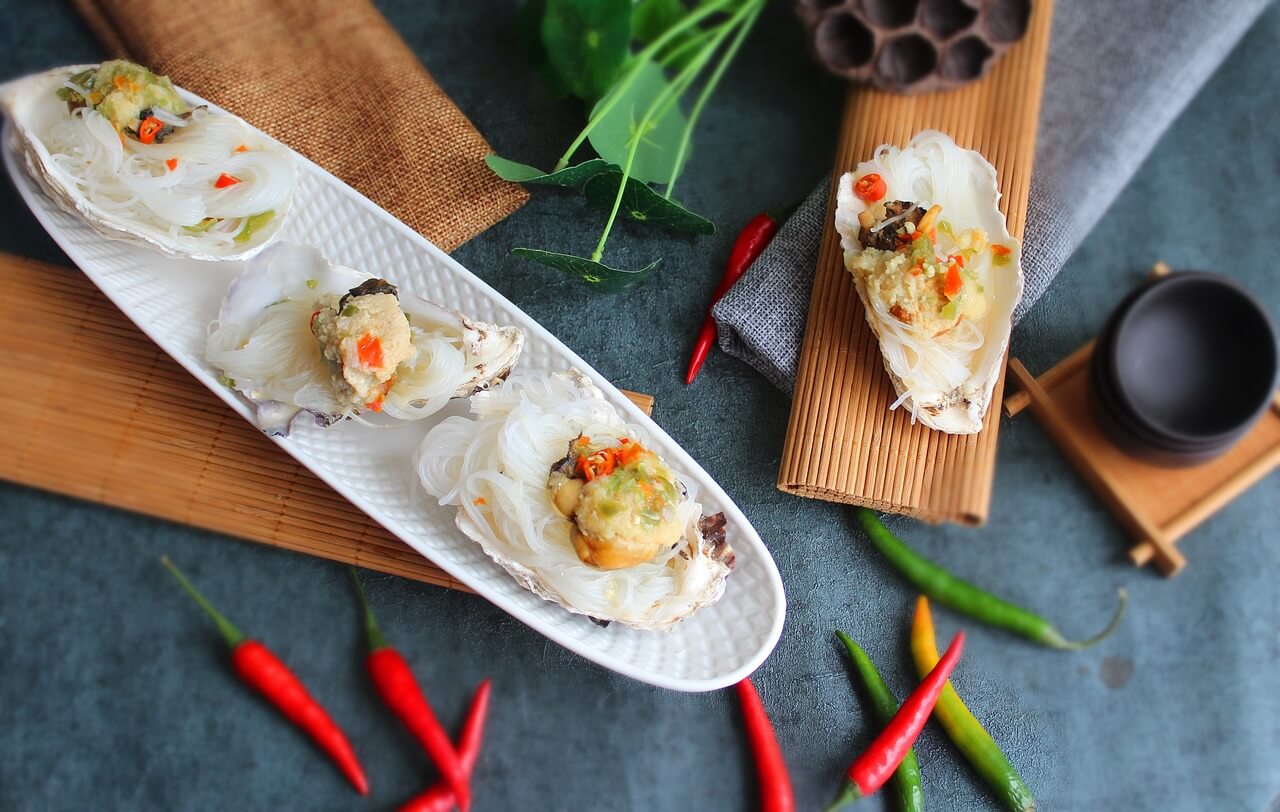Food is a universal language that connects us all, transcending borders, cultures, and languages. Every country has its own culinary identity, influenced by geography, climate, history, and tradition. From the spicy dishes of Southeast Asia to the rich, savory stews of Europe, global cuisines offer a fascinating glimpse into the heritage and culture of each region.
In this article, we will embark on a flavorful journey across the world, exploring the distinct characteristics of some of the most beloved and iconic cuisines. We will also examine how globalization has shaped the way we experience food and how our own culinary practices are evolving.
1. Italian Cuisine: A Celebration of Simplicity and Freshness
Italian cuisine is renowned for its emphasis on fresh, high-quality ingredients, bold flavors, and simple preparation. At the heart of Italian food are the traditional dishes that have been passed down through generations.
Key Dishes:
- Pizza: A global favorite, Italian pizza is known for its thin crust, fresh tomato sauce, mozzarella cheese, and a variety of toppings such as pepperoni, mushrooms, and basil.
- Pasta: Whether it’s spaghetti, fettuccine, or ravioli, pasta is the cornerstone of Italian meals. It is often served with rich, flavorful sauces like marinara, Alfredo, and pesto.
- Risotto: A creamy, rice-based dish typically cooked with stock, butter, and Parmesan cheese, risotto can be adapted to include vegetables, seafood, or meats.
Regional Flavors:
- Northern Italy is known for its use of butter, cream, and rice, as seen in dishes like risotto and polenta.
- Southern Italy offers bold flavors with a reliance on olive oil, tomatoes, garlic, and herbs, exemplified in dishes like pizza and pasta alla puttanesca.
Italian cuisine has greatly influenced global culinary trends, and its influence can be seen in countless adaptations worldwide, from pizza chains to pasta restaurants.
2. Japanese Cuisine: Precision, Simplicity, and Balance
Japanese cuisine is defined by its elegance and balance, focusing on fresh, seasonal ingredients prepared with great attention to detail. The Japanese approach to food emphasizes texture, presentation, and harmonious flavors.
Key Dishes:
- Sushi: Raw fish, often served with vinegared rice, nori (seaweed), and wasabi, is a quintessential part of Japanese cuisine. Sushi can be enjoyed in various forms, such as nigiri, sashimi, and maki rolls.
- Ramen: A comforting noodle soup made with broth (often pork-based), noodles, and various toppings such as boiled eggs, bamboo shoots, and pork belly.
- Tempura: Lightly battered and deep-fried vegetables or seafood, tempura is a beloved dish in Japanese cuisine known for its crispy texture.
Regional Flavors:
- Hokkaido: Known for its dairy products, seafood, and miso-based ramen.
- Kyoto: Famous for its delicate, seasonal dishes like kaiseki (traditional multi-course meal) and yudofu (tofu hot pot).
- Okinawa: Features dishes influenced by both Chinese and Japanese flavors, such as Okinawa soba (wheat noodles) and goya champuru (stir-fry with bitter melon).
Japanese food culture has made a major impact globally, with sushi becoming a staple in many countries. The focus on quality ingredients and precision has set high culinary standards around the world.
3. Mexican Cuisine: Bold, Flavorful, and Colorful
Mexican food is known for its bold and vibrant flavors, influenced by indigenous ingredients such as corn, beans, chili peppers, and avocado. Mexican cuisine combines ancient culinary traditions with Spanish colonial influences, resulting in a diverse and complex food culture.
Key Dishes:
- Tacos: Soft or hard tortillas filled with a variety of ingredients like grilled meats, fish, vegetables, cheese, and salsa. Tacos are a versatile street food enjoyed across the country.
- Enchiladas: Rolled tortillas stuffed with chicken, beef, or cheese, then topped with a rich chili sauce and baked.
- Guacamole: A refreshing dip made from mashed avocados, lime, tomatoes, onions, and cilantro, often served with tortilla chips.
Regional Flavors:
- Oaxaca: Known as the “land of seven moles,” Oaxaca is famous for its complex mole sauces, made with ingredients like chili peppers, chocolate, and nuts.
- Yucatán: The food here is heavily influenced by Mayan cuisine, with dishes like cochinita pibil (slow-cooked pork) and sopa de lima (lime soup).
- Baja California: Famous for its seafood, particularly fish tacos and ceviche.
Mexican food has gained immense popularity worldwide, with Mexican restaurants and food trucks popping up in cities around the globe. The balance of heat, freshness, and bold spices in Mexican dishes makes it one of the most beloved cuisines.
4. Indian Cuisine: A Rich Tapestry of Flavors and Spices
Indian cuisine is an explosion of colors, textures, and flavors. Spices play a central role in Indian cooking, creating complex and aromatic dishes that vary widely from region to region.
Key Dishes:
- Biryani: A fragrant rice dish cooked with meat (chicken, mutton, or beef), spices, and saffron, often served with a side of yogurt-based raita.
- Curry: Indian curries range from rich, creamy dishes like butter chicken to spicy, tangy options like vindaloo. The use of spices such as turmeric, cumin, and coriander defines the curry flavor profile.
- Samosa: A popular snack, samosas are deep-fried pastry pockets filled with spiced potatoes, peas, or meat.
Regional Flavors:
- North India: Known for rich, creamy curries, tandoori dishes, and bread like naan and paratha. Dishes like butter chicken and paneer tikka originate from this region.
- South India: Famous for rice-based dishes like dosa (thin, crispy pancakes) and sambar (a lentil-based stew). The food here tends to be spicier and features more coconut-based ingredients.
- West India: Coastal regions use seafood heavily, and the cuisine is often spicier, with dishes like Goan fish curry and Prawn Malai Curry.
Indian food has become popular worldwide, with Indian restaurants offering everything from traditional street food to regional specialties. The use of spices in Indian cuisine has influenced global cooking styles, with curry powder and garam masala being common ingredients in kitchens worldwide.
5. Middle Eastern Cuisine: A Fusion of Flavors and Cultures
Middle Eastern cuisine is a diverse blend of flavors, influenced by the various cultures that have existed in the region for centuries. The food is often characterized by the use of fresh herbs, spices, and olive oil, with a focus on vegetables, grains, and meats like lamb, chicken, and beef.
Key Dishes:
- Hummus: A creamy dip made from blended chickpeas, tahini, garlic, olive oil, and lemon juice. It is often served with pita bread or vegetables.
- Falafel: Deep-fried balls made from ground chickpeas or fava beans, herbs, and spices. Falafel is a popular street food in many Middle Eastern countries.
- Shawarma: Marinated, spiced meat (often lamb or chicken) that is slow-cooked on a vertical rotisserie, sliced thin, and served in a pita or flatbread with salad, pickles, and tahini.
Regional Flavors:
- Lebanon: Known for dishes like tabbouleh (a fresh parsley salad), kibbeh (bulgur wheat stuffed with minced meat), and manakish (flatbread with toppings).
- Turkey: Turkish cuisine features dishes like kebabs, baklava (a sweet pastry), and Turkish delight. Turkish coffee is also famous for its rich, intense flavor.
- Iran: Persian cuisine features rice dishes like pilaf and stews like ghormeh sabzi (herb stew), often served with fresh yogurt and flatbread.
Middle Eastern food has experienced a resurgence in popularity due to its health benefits (such as the Mediterranean diet) and its rich, bold flavors. As a result, Middle Eastern restaurants are becoming more prevalent in cities worldwide.
6. French Cuisine: Elegance, Technique, and Refinement
French cuisine is renowned for its culinary artistry, refined techniques, and rich flavors. It has been influential in the development of Western cooking, with French chefs establishing many of the fundamental principles of modern cuisine.
Key Dishes:
- Croissant: A buttery, flaky pastry that is a staple of French breakfasts. Croissants are often served with jam, butter, or filled with chocolate.
- Coq au Vin: A classic French dish of chicken slow-cooked in red wine, mushrooms, onions, and bacon.
- Ratatouille: A vegetable stew made with tomatoes, zucchini, eggplant, and peppers, showcasing the simplicity and seasonal nature of French cooking.
Regional Flavors:
- Provence: Known for its use of olive oil, garlic, and herbs like thyme and rosemary. Dishes like bouillabaisse (fish stew) are popular in this region.
- Brittany: Famous for its seafood, including oysters and mussels, as well as crepes and galettes.
- Burgundy: Known for hearty dishes like beef bourguignon and escargots, often prepared with the region’s famous wines.
French cuisine remains an iconic part of global culinary culture, with French techniques and dishes inspiring chefs around the world. It is also the birthplace of haute cuisine, which emphasizes precision, luxury ingredients, and expert technique.
Conclusion
The world’s cuisines offer a beautiful mosaic of flavors, ingredients, and traditions, each reflecting the culture and history of its region. Whether it’s the simplicity of Italian pasta, the bold spices of Indian curry, or the elegance of French fine dining, exploring global cuisines is a delicious journey that not only introduces us to new tastes but also deepens our understanding of different cultures.
As food continues to evolve and cross borders, our appreciation for culinary diversity grows, making food a central part of our global connectedness. So, whether you’re savoring a sushi roll in Tokyo, enjoying a taco in Mexico City, or sampling a croissant in Paris, you are participating in a shared human experience that celebrates the artistry and joy of food.
Key Takeaways:
- Each global cuisine offers a unique window into the culture and traditions of the region.
- Italian cuisine emphasizes simplicity, fresh ingredients, and regional specialties.
- Japanese food highlights balance, precision, and seasonal ingredients.
- Mexican cuisine is known for its bold flavors and diverse regional dishes.
- Indian food offers a rich tapestry of spices and complex flavors.
- Middle Eastern cuisine blends fresh herbs and spices, with an emphasis on health and flavor.
- French cuisine is celebrated for its refinement, technique, and luxurious ingredients.
Exploring world cuisines is not just about tasting new foods but about appreciating the stories and cultures behind the dishes that have shaped the way we eat today.


Autocad crack
Autocad 2025
autodesk autocad crack
auto cad crack
fl studio crack
fl studio 2025
idm crack
idm 2025
Internet Download Manager crack
revit crack
autodesk revit 2025
autodesk revit crack
photoshop crack
adobe photoshop crack
acrobat crack
adobe acrobat crack
premiere pro crack
adobe premiere pro crack
filmora crack
filmora crack 2025
Lightroom crack
adobe Lightroom crack
adobe after effects crack
after effects crack
illustrator crack
adobe illustrator crack
disk drill crack
JetBrains crack
JetBrains PyCharm crack
Wallpaper Engine crack
Wallpaper Engine free 2025
valorant hack 2025
valorant aimbot
valorant cheat
capcut crack
capcut pro crack
lightroom crack
adobe photoshop crack
acrobat crack
adobe acrobat crack
premiere pro crack
adobe premiere pro crack
filmora crack
filmora crack 2025
Lightroom crack
adobe Lightroom free download
disk drill crack
JetBrains crack
JetBrains PyCharm crack